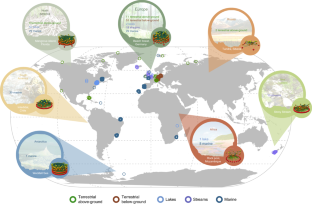
Abstract: "Predator–prey interactions in natural ecosystems generate complex food webs that have a simple universal body-size architecture where predators are systematically larger than their prey. Food-web theory shows that the highest predator–prey body-mass ratios found in natural food webs may be especially important because they create weak interactions with slow dynamics that stabilize communities against perturbations and maintain ecosystem functioning. Identifying these vital interactions in real communities typically requires arduous identification of interactions in complex food webs. Here, we overcome this obstacle by developing predator-trait models to predict average body-mass ratios based on a database comprising 290 food webs from freshwater, marine and terrestrial ecosystems across all continents. We analysed how species traits constrain body-size architecture by changing the slope of the predator–prey body-mass scaling. Across ecosystems, we found high body-mass ratios for predator groups with specific trait combinations including (1) small vertebrates and (2) large swimming or flying predators. Including the metabolic and movement types of predators increased the accuracy of predicting which species are engaged in high body-mass ratio interactions. We demonstrate that species traits explain striking patterns in the body-size architecture of natural food webs that underpin the stability and functioning of ecosystems, paving the way for community-level management of the most complex natural ecosystems."
Read More: https://www.nature.com/articles/s41559-019-0899-x
No comments:
Post a Comment